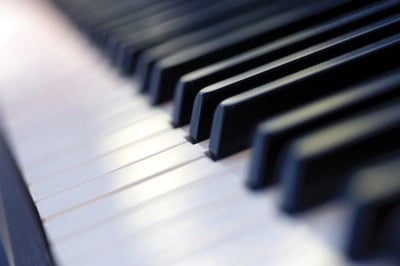Keep Your Congregation From Tuning Out with Technology

By Kristian Ponsford
A few years ago I moved to a new house situated along the flight path into Manchester airport, one of the busiest airports in Northern England. The first few weeks consisted mainly of broken sleep and sudden shock as yet another noisy plane would cut through the air above our little house. However, in a surprisingly short amount of time I adjusted to the familiar sound of the aircrafts and soon I didn’t even hear them.
Our next house was in a town centre adjacent to a shopping centre and a multi story car park which was also the evening residence for a tribe of noisy seagulls. At 6am every morning the metal shutters of the centre were pulled open, the alarms reset and the seagulls would launch into full chorus. Again, within a few months this noise was simply filtered out.
Scientists explain this process of filtering as Habituation. They refer to a specific structure in the brain stem called the pons, which as well as our hearing deals with our sleep, respiration, swallowing, bladder control, equilibrium, taste, eye movement, facial expressions, facial sensation, and posture. This process of habituation is even the main form of treatment for hearing issues such as Tinnitus.
Habituation is defined as the brains ability to filter or ignore familiar, repetitive or even boring noises.
Ignored Much?
Now as a worship leader I find this all a bit scary.
I wonder how long it takes the average brain to filter out our repetitive and familiar sounds. How many songs does it take before my acoustic guitar is no longer heard, or the same familiar song rock arrangement is simply ignored. Maybe the excitement expressed when a new song, sound, band or genre comes along is not just due to its creativity but because it is fresh or more accurately refreshing.
Like many people I love music and the way it can move people. I love the way music is constructed and layered. I love musical creativity and expression. And I’m often frustrated that my passions outstrip my abilities. All of these thoughts instigated a change in the way I lead worship and started me on a journey of experimentation.
In short I wanted to freshen up the way we did musical worship, the instrumentation, the sounds, the textures.
One Solution
It was amidst all of this that I discovered loops. Loops are basically tracks designed to compliment your band but provide the sounds and textures usually reserved for the studio or huge productions.
Go and listen to some music that really moves you but this time really listen. The dark room, eyes closed, music loud, kind of listen. Study your favourite band’s album and you begin to notice the little textures that are so easily missed. In my music collection I started to notice the little electronic beeps, the multi layers of pads, the lush string parts, solo cellos, multiple pianos, the synth bass parts below the normal bass, the electric drum sounds mixed with the acoustic kit and so on. These are the textures and sounds missing from most worship bands and these are the parts that loops can provide. This is where technology and worship can collide beautifully.
I believe technology can be to our era what the Cathedrals were to previous worshipers.
Soundscapes
Walk into a Cathedral and the sheer size and grandeur of the place screams of the glory and majesty of God. Now an aspect of that is missing in most modern worship settings. Maybe the use of technology, media and well-crafted sounds can draw our worshippers to a higher place to a sense of the majestic and to a place of wonder in worship.
This is why I love using loops and technology in our worship times.
Loops are more common than you might think too, in fact it’s harder to find chart topping bands that don’t use loops when playing live. The worship scene is readily accepting and recognizing the advantage of loops and there is a vast online community offering support and guidance.
The application of running loops varies from simple iPod setups to laptops and midi controllers. Personally I use a brilliant piece of software called Ableton Live to trigger my loops. Ableton is amazing and is one of the most versatile programs ever.
Ableton can be found in many DJ setups or is usually being run on the macbook you often notice sat next to the drummer.
Probably the biggest reason I chose Ableton was the fact that I am still in total control of the loop. I am not playing to a backing track. Ableton allows me to move around the song with ease and with the press of foot pedal I can trigger off the verse or repeat the chorus or bridge. I can play with loop and not to loops.
In fact, I’m now a self-confessed Ableton geek and in our church Ableton feeds multiple sends to our desk for strings, beats, guitar parts, keys & pads. It also feeds clicks and band director cues into ears so we are all super tight. Ableton controls our projection software and triggers off lyric video in time with our loops. It turns the pages on our iPads and pdf chord sheets and Ableton can even control our lightning rig!
Since the introduction of loops into our worship set up our band is tighter, our musicians are more expressive and our church is more engaged. What more could I ask for?
Technology is my pile of bricks and I aim to creatively pair it the with the cement of servant hearted musicians to build something that is bigger than all of us. To build an environment that allows people to engage with God and lives to be changed.
Kristian is a Worship Leader, Songwriter and Ableton trainer with a passion for seeing the church engage in new, fresh and relevant ways. This is coupled with his love of using technology, loops, samples and DJ equipment in his worship leading. Highlights of his year includes leading at large UK festivals such as New Wine & Spring Harvest.
Visit, iam-kp.com





